Garden Ideas for Dogs UK: Creating Pet-Friendly Spaces in Your Garden
Creating a dog-friendly garden in the UK involves simple and thoughtful planning to ensure it is safe and enjoyable for your furry friend. From choosing the right plants to designing spaces where your dog can play, dig, and relax, a well-planned garden can enhance both your and your dog’s outdoor experience. How can you turn your garden into a haven for your dog?
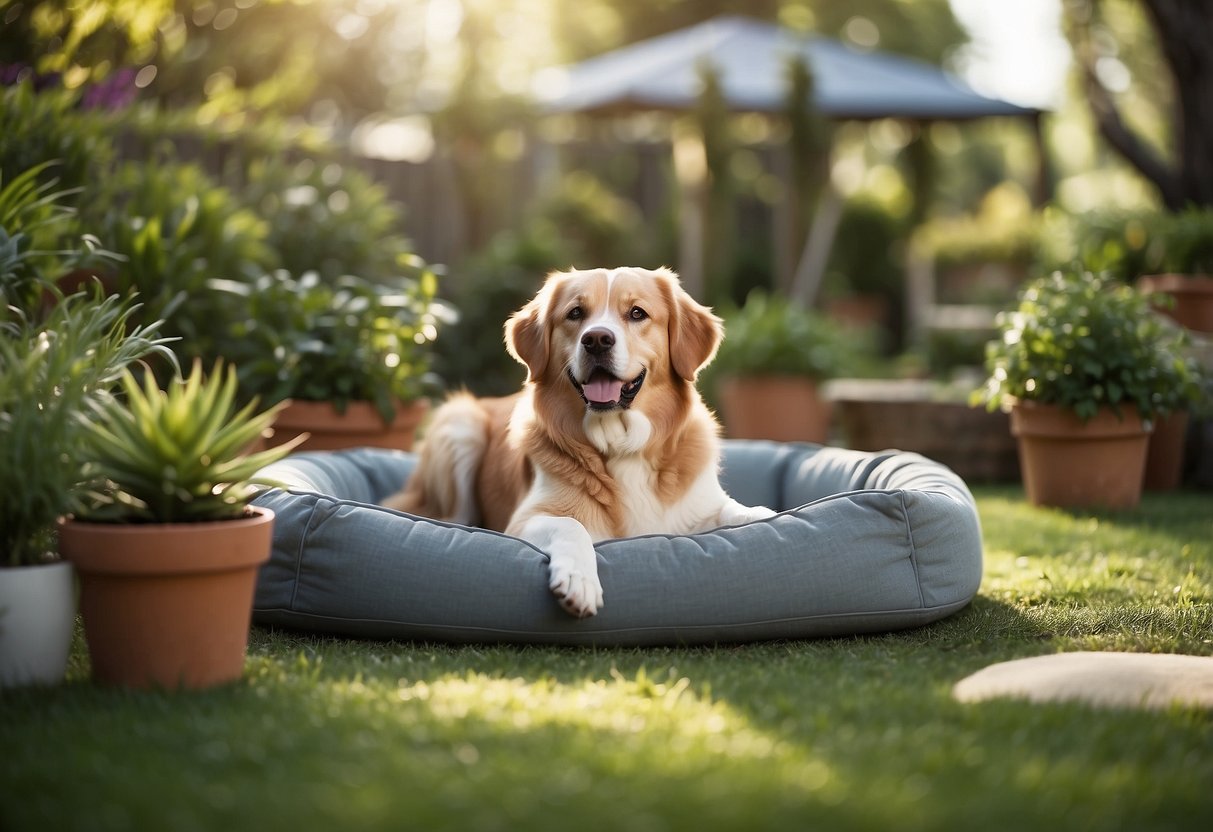
By making a few key changes and additions, you can create a fun and secure environment for your dog. This involves looking at everything from water features to shade areas, and even specific spots designated for digging. You’ll be able to enjoy a beautiful garden while knowing it meets the needs of your pet too.
1) Dog-Friendly Herb Garden

Creating a herb garden that’s safe for your dog can be rewarding. Plants like rosemary are not only great for cooking but are also pet-safe. Oregano, or marjoram, is another herb that’s safe for dogs and popular in Italian dishes.
You can also plant dill, which is safe for both humans and dogs. These herbs provide delightful scents and are easy to grow.
To add variety, consider lavender and mint. These plants have strong smells that your dog will love exploring. A herb garden can be a fun and safe space for your furry friend.
2) Pet-Safe Pesticides
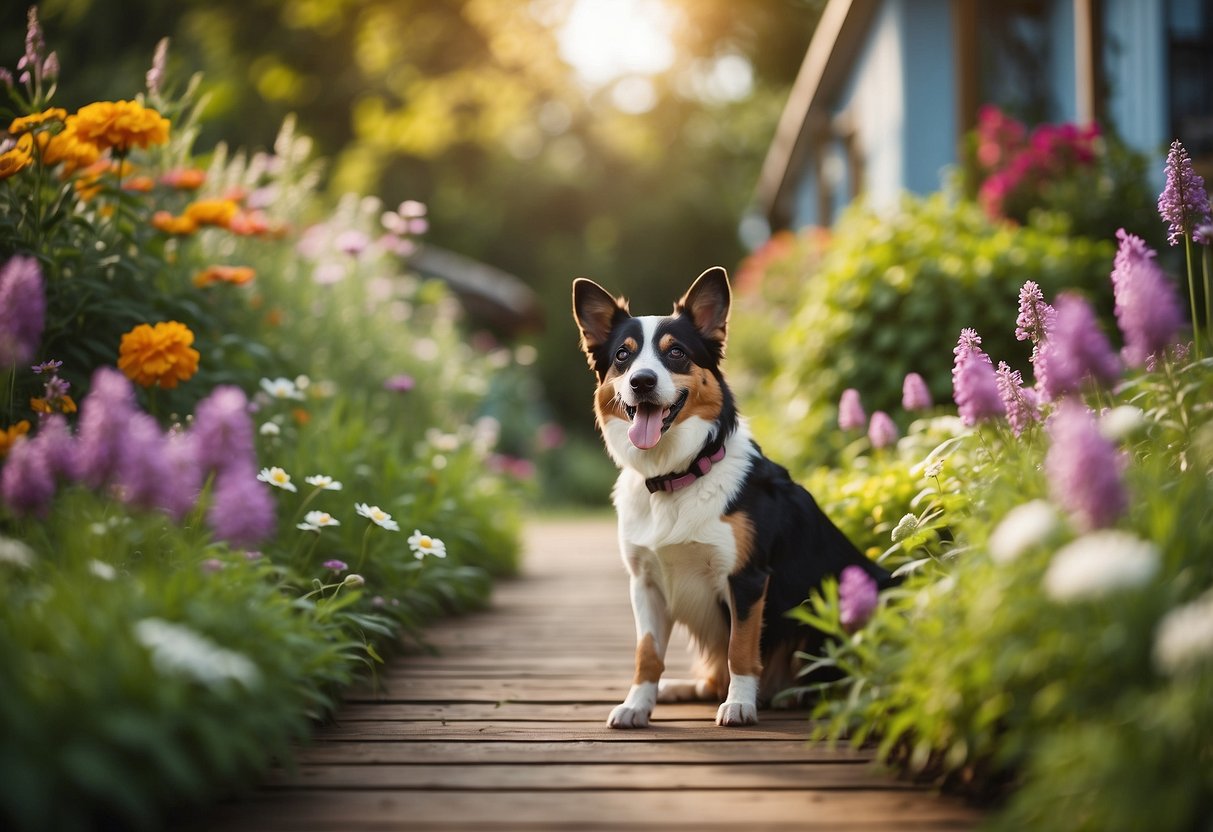
When gardening with dogs in mind, it’s crucial to choose pet-safe pesticides. Many natural options are available that are effective and non-toxic.
One popular option is acetic acid, the active ingredient in vinegar, which can be used to treat weeds. Always let treated areas dry before letting your dog back on them.
Avoid using non-organic slug pellets, as they can be harmful to pets. Keep an eye on your dog around slugs and snails, as these can carry lungworm. Always prioritize safety in your garden.
3) Sturdy Fencing Ideas
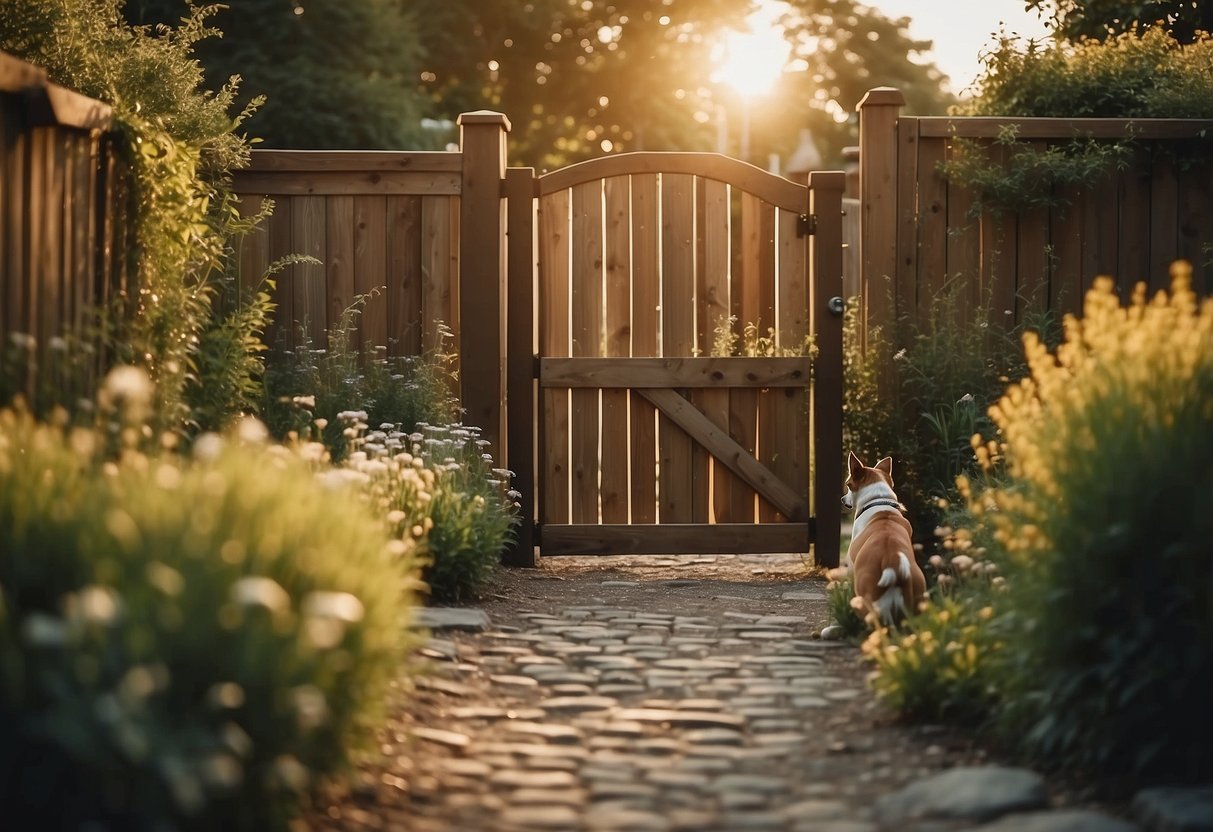
When it comes to keeping your dog safe, sturdy fencing is key.
Chain link fencing is a strong option. It’s easy to install, and you can even extend it below ground to stop diggers.
For a more secure solution, consider a closed board timber fence. It can be pricey, but it offers privacy and durability. You can read more about this option here.
Adding a buried metal plate at the fence base can prevent even the most determined diggers from getting out.
4) Shady Resting Spots

Creating shady resting spots in your garden is essential for your dog’s comfort. Dogs can’t sweat like humans, so they need cool places to unwind.
Use trees or build dog-specific shelters to create shaded areas. A tiny house or faux hill can provide a cozy spot.
You can also use shade sails or large umbrellas for quick, flexible shade. These additions will keep your dog cool and happy on hot days.
5) Durable Chew Toys

Choosing the right chew toys for your dog can make your garden experience more fun for both you and your furry friend. Durable chew toys are perfect for keeping your dog entertained and your plants safe.
The Benebone Bacon Flavor Wishbone is a great option. It’s made of tough nylon and has a flavor dogs love.
Another good choice is the West Paw Zogoflex Hurley. It’s lightweight, floats in water, and can even be sent back for recycling when it’s worn out.
6) Non-Toxic Plants

When planning your garden, make sure to include plants that are safe for dogs. Sunflowers, camellias, and snapdragons are great options. They are beautiful and won’t harm your furry friend if ingested.
Rosemary is another good choice. It’s pet-safe and can fill empty spaces in your garden with a lovely scent. This can be a practical and fragrant addition.
7) Animal Water Features
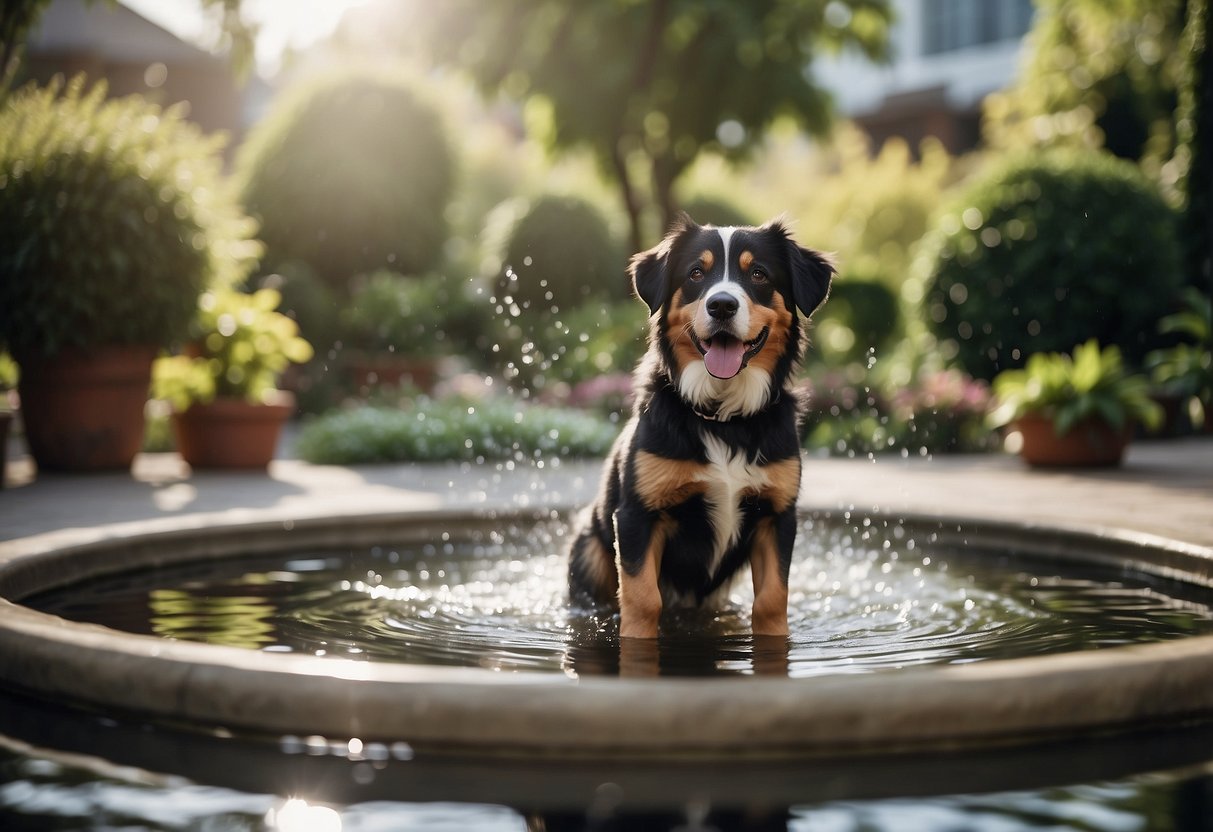
Animal water features can add charm to your dog-friendly garden. They provide a playful element that dogs will enjoy.
You can find a variety of designs, like the Dog at Fountain Solar Water Feature.
These features not only look great but can also provide a drinking spot for your pooch, making your garden both beautiful and functional.
8) DIY Dog Paths

Creating DIY dog paths in your garden can keep your pup entertained and safe. Use materials like gravel, mulch, or stepping stones for the paths.
Make sure the paths lead to your dog’s favorite spots, like shady areas or play zones.
Curving paths add interest and encourage your dog to explore different parts of the garden.
Using paw-friendly surfaces ensures your pup will enjoy wandering around. For some ideas, you can visit this guide.
9) Raised Plant Beds

Raised plant beds are a great way to keep plants safe from your dog’s playful paws.
These beds can be placed at a height that prevents your dog from trampling the plants.
Raised beds also make it easy to create a neat and organized garden space.
Consider using sturdy materials like wood or stone for durability. For more ideas, visit DogsBarn.
10) Doggie Agility Course
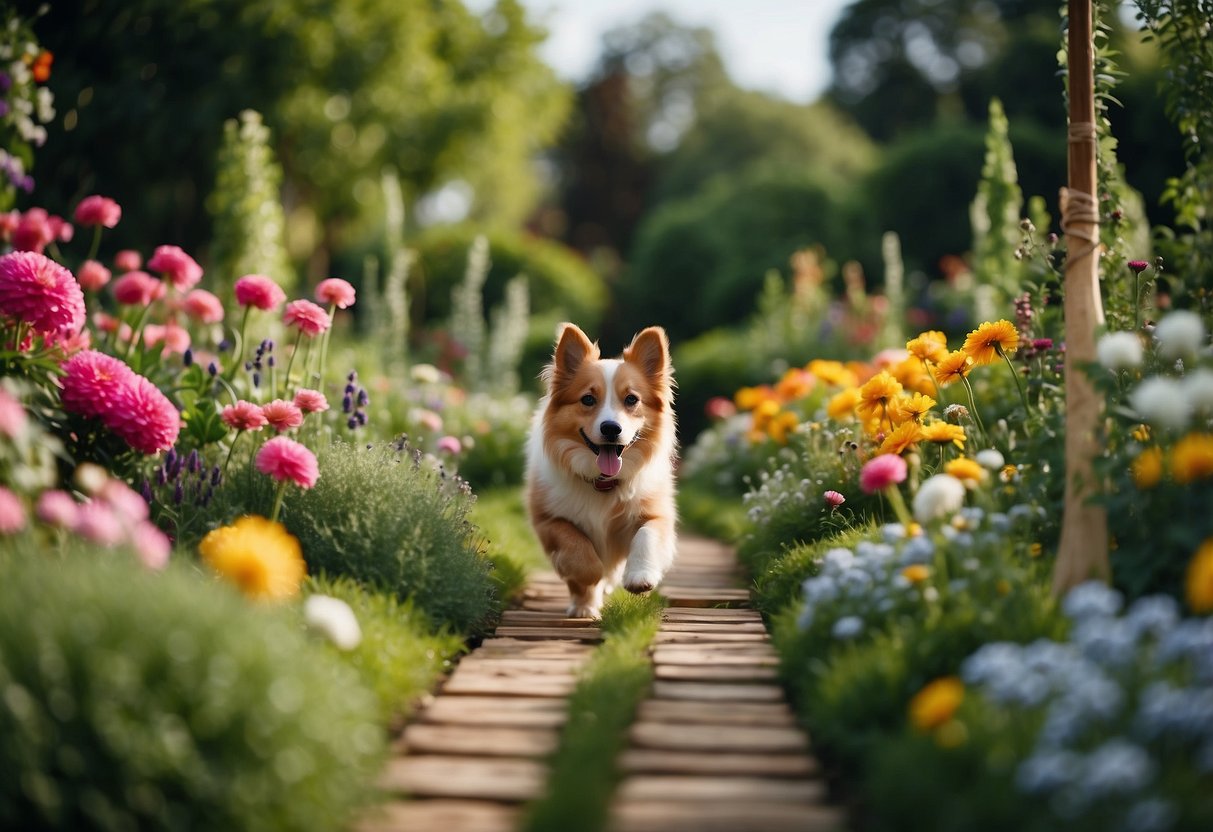
Creating a doggie agility course in your garden is a fun way to keep your dog active. Start with a small jump and gradually build up. Remember to reward your dog each time!
Weaving obstacles are easy to set up. You can use lightweight items from around the garden. Try walking your dog through the course to get them familiar with it.
For more ideas, explore these DIY dog agility course plans that offer pictures and steps to make the process easier.
Creating a Dog-Friendly Garden

Designing a garden that caters to your dog’s needs involves selecting safe plants, creating comfortable pathways, and ensuring toxic plants are avoided. Each element contributes to making the space both enjoyable and secure for your pet.
Safe Plants and Vegetation
Choose plants that are safe for dogs to avoid any health risks. For example, rosemary, sunflowers, and marigolds are excellent options. Heather and lavender are also great because they are non-toxic and add beauty to your garden.
Consider planting hardy grasses that can withstand wear and tear from your dog’s activities. Including durable ground covers like creeping rosemary can fill empty spaces while staying pet-safe. These choices ensure your garden remains lush without compromising your pet’s safety.
Dog-Friendly Pathways
Design pathways in your garden that are comfortable for your dog’s paws. Soft surfaces like mulch or smooth pebbles can be great choices. Paw-friendly surfaces reduce the risk of injuries and offer a pleasant experience for your dog.
Incorporate natural shady spots along the pathways, such as areas created by overhanging foliage or small trees. Adding a parasol or a retractable canopy can provide additional shaded areas. These spots let your dog rest and cool down during sunny days, making the garden more inviting.
Avoiding Toxic Plants
It’s crucial to steer clear of plants that can harm your dog. Common toxic plants like azaleas, foxgloves, and daffodils should be avoided. Check your entire garden thoroughly to ensure there are no poisonous plants that your dog might ingest.
Planting pet-safe vegetation like rosemary and sunflowers not only keeps your garden safe but also vibrant and exciting. Regularly monitor your garden for any new growth that might pose a threat to your furry friend’s health, ensuring a safe and secure environment for them to play in.
Designing Play Areas for Dogs

Creating a play area for your dog involves incorporating engaging features like tunnels and benches, and ensuring cool, shady spots where your pup can relax and stay comfortable.
Interactive Features
Dogs love to explore and play, so adding dog-height benches, tunnels, and flower beds to your garden is a great idea. These features provide opportunities for climbing, hiding, and exploring. You can even add steps or small ramps for extra fun.
Another popular choice is a designated digging pit. This allows your dog to dig without ruining your flower beds. Using materials like sand or soft soil makes it safe and enjoyable for them.
Artificial grass is also a good option for play areas. It requires little maintenance and is gentle on your dog’s paws. Many rescue centers use it for its durability and ease of cleaning. You can read more about such ideas at this link.
Shady Spots for Relaxing
Providing shady areas in your garden will keep your dog cool during hot days. You can use natural shading from overhanging foliage and small trees. Adding a parasol or retractable canopy is another effective solution.
Consider planting tall shrubs or placing structures like pergolas to create these shaded spots. A comfortable, shaded resting area will ensure your dog remains cool and happy.
Another idea is to plant dog-friendly plants and herbs. These not only offer shade but also a sensory experience for your dogs. Herbs like basil and thyme are safe and can provide a refreshing scent. Check out this link for more dog-friendly garden ideas.







